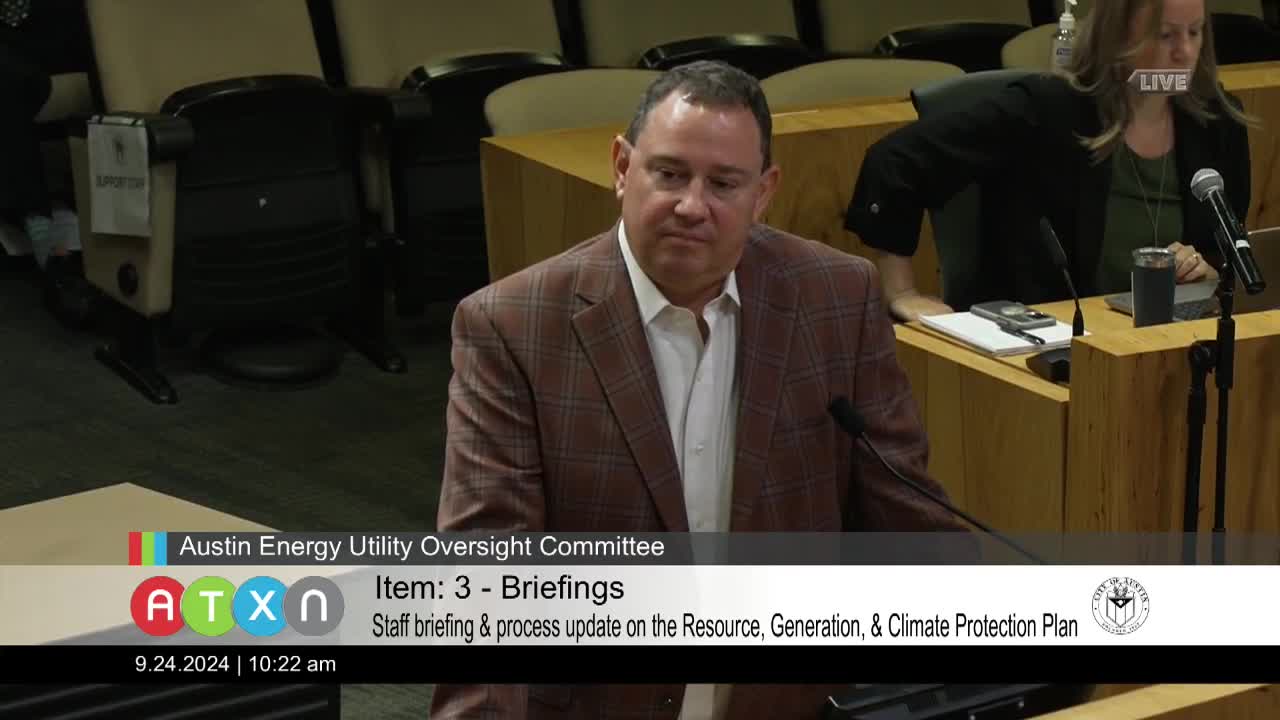Austin Energy braces for surge in electric demand
September 24, 2024 | Austin, Travis County, Texas
This article was created by AI summarizing key points discussed. AI makes mistakes, so for full details and context, please refer to the video of the full meeting. Please report any errors so we can fix them. Report an error »

In a recent government meeting, officials discussed the anticipated growth in energy demand and its implications for Austin's infrastructure. The conversation highlighted the significant increase in large energy loads, particularly from new data centers, oil and gas facilities, and battery manufacturing, which are expected to contribute to a steep rise in the interconnection queue managed by the Electric Reliability Council of Texas (ERCOT).
The discussions revealed that while the supply in the queue is primarily composed of renewable sources—wind, solar, and batteries—there is also a minor inclusion of natural gas. Officials noted that the market appears to favor these cleaner energy sources, which aligns with broader trends in energy production. However, uncertainty remains regarding how much of this new supply and demand will actually materialize, with estimates suggesting that only 20% to 50% of the projected growth may be realized.
Austin's energy landscape is further complicated by population growth, which is driving demand alongside these large facilities. The meeting underscored the need for innovative solutions to meet future energy standards, drawing parallels to the Federal Clean Air Act amendments of 1991. Officials reminisced about how flexible approaches to regulatory standards led to successful compliance and innovation in various industries, including baking, where businesses adopted more efficient technologies.
Council members also sought clarification on energy demand projections, particularly concerning electric vehicle (EV) charging. A chart presented during the meeting illustrated a worst-case scenario where all EVs charge simultaneously, which is unlikely. A more realistic expectation is that only a fraction of the potential load will occur at peak times, emphasizing the importance of planning for varied usage patterns.
Overall, the meeting highlighted the critical intersection of energy demand, supply capabilities, and regulatory frameworks as Austin prepares for a future marked by significant growth and the transition to cleaner energy sources.
The discussions revealed that while the supply in the queue is primarily composed of renewable sources—wind, solar, and batteries—there is also a minor inclusion of natural gas. Officials noted that the market appears to favor these cleaner energy sources, which aligns with broader trends in energy production. However, uncertainty remains regarding how much of this new supply and demand will actually materialize, with estimates suggesting that only 20% to 50% of the projected growth may be realized.
Austin's energy landscape is further complicated by population growth, which is driving demand alongside these large facilities. The meeting underscored the need for innovative solutions to meet future energy standards, drawing parallels to the Federal Clean Air Act amendments of 1991. Officials reminisced about how flexible approaches to regulatory standards led to successful compliance and innovation in various industries, including baking, where businesses adopted more efficient technologies.
Council members also sought clarification on energy demand projections, particularly concerning electric vehicle (EV) charging. A chart presented during the meeting illustrated a worst-case scenario where all EVs charge simultaneously, which is unlikely. A more realistic expectation is that only a fraction of the potential load will occur at peak times, emphasizing the importance of planning for varied usage patterns.
Overall, the meeting highlighted the critical intersection of energy demand, supply capabilities, and regulatory frameworks as Austin prepares for a future marked by significant growth and the transition to cleaner energy sources.
View full meeting
This article is based on a recent meeting—watch the full video and explore the complete transcript for deeper insights into the discussion.
View full meeting
